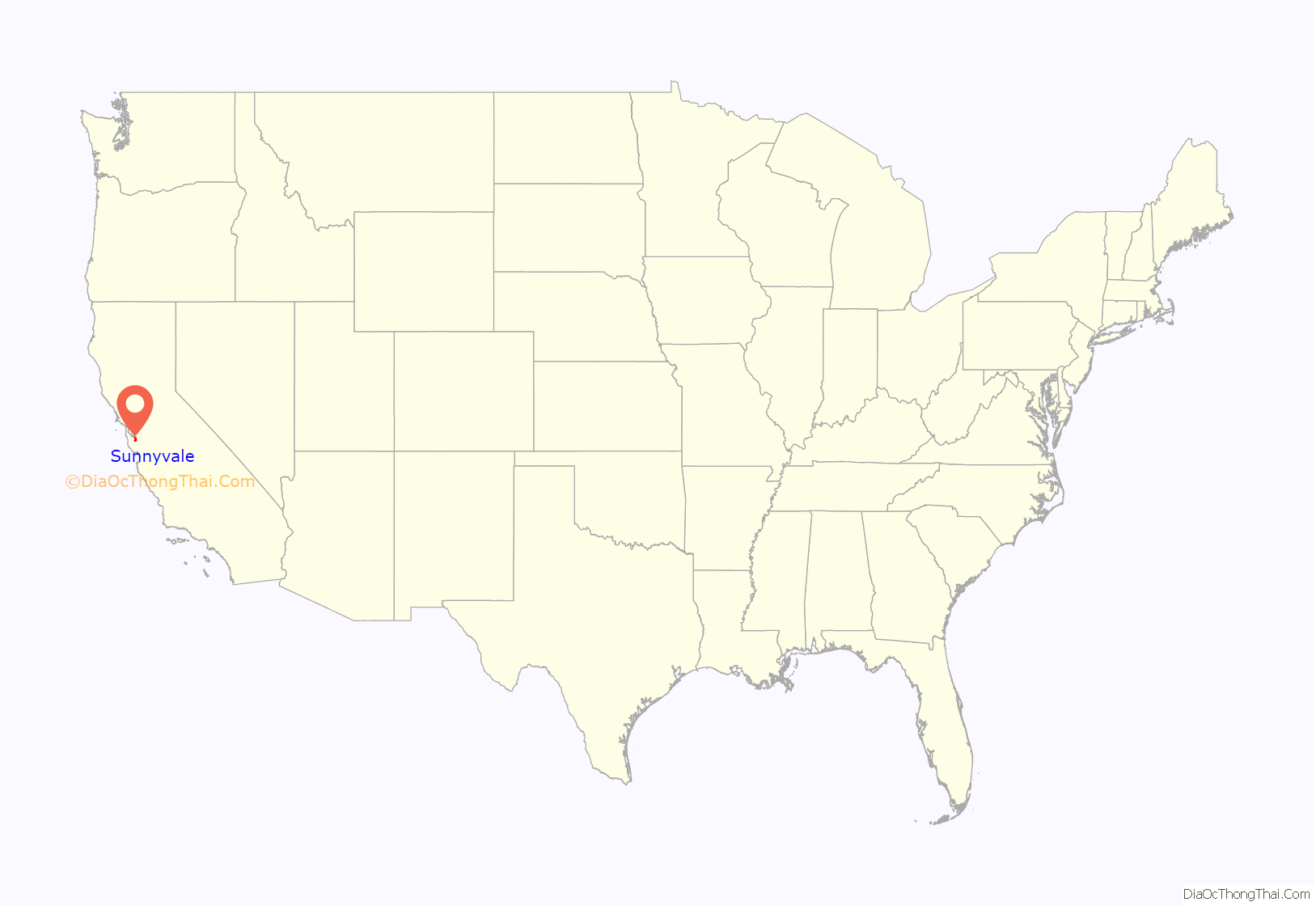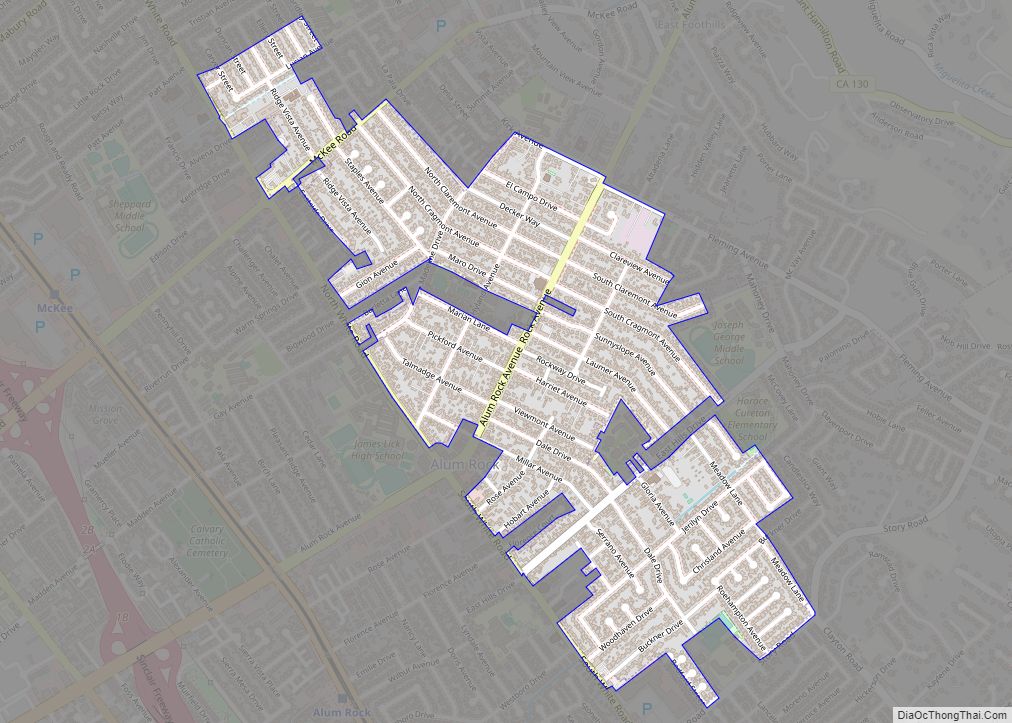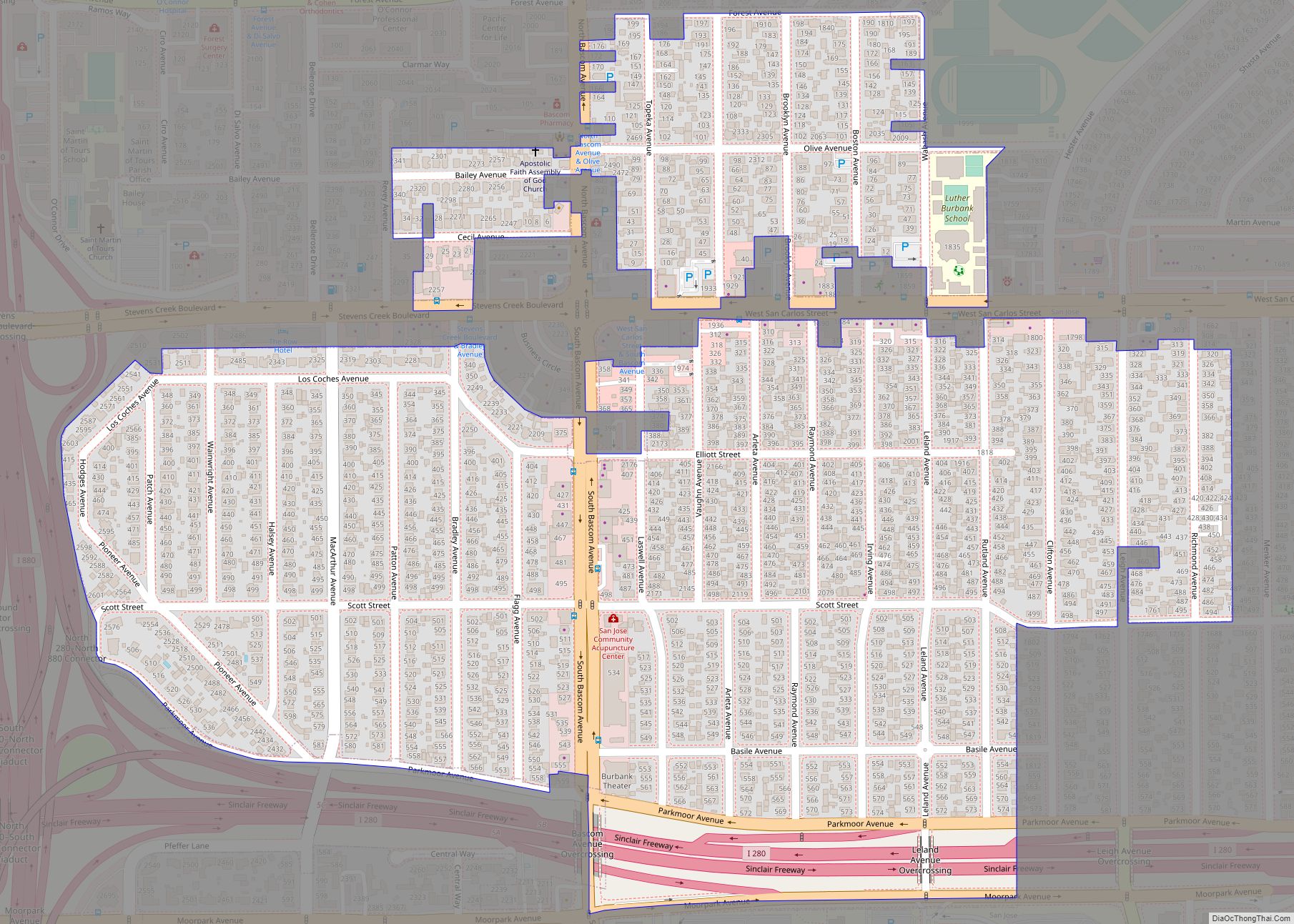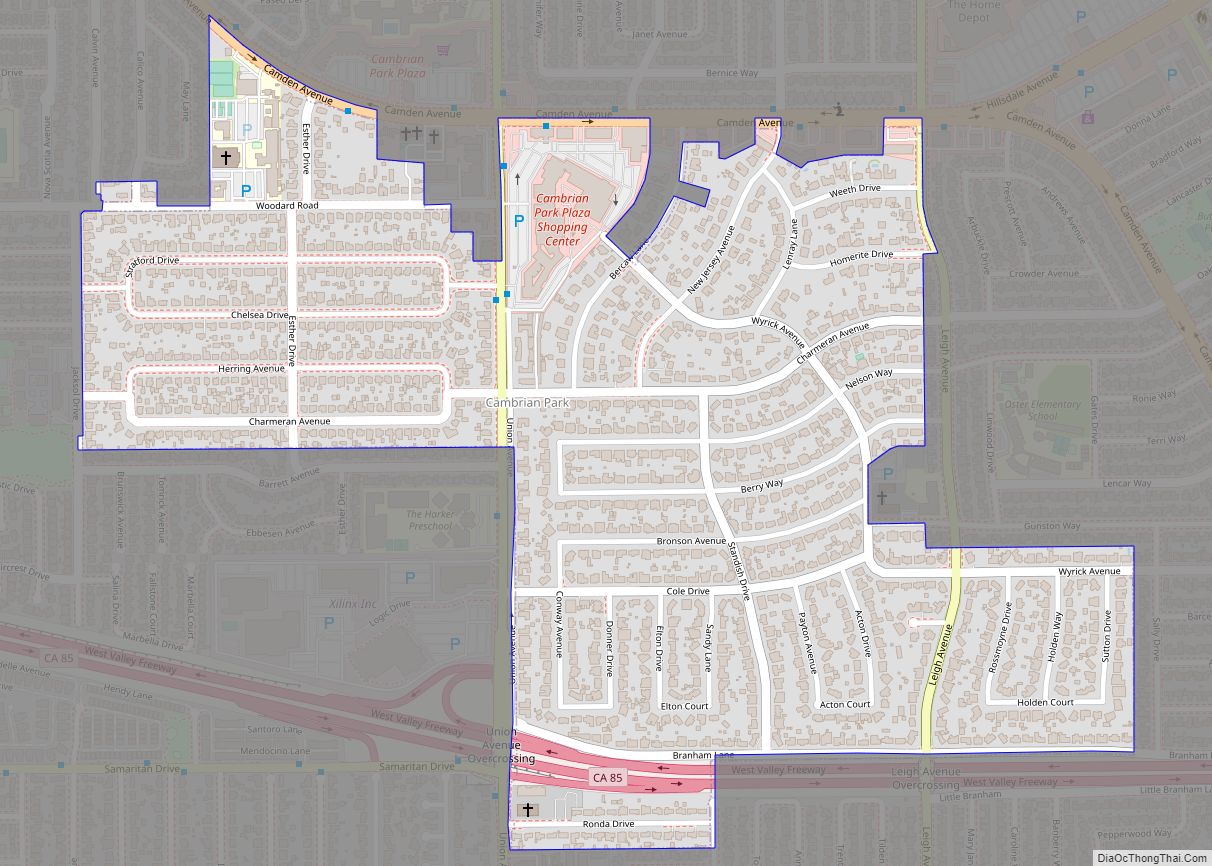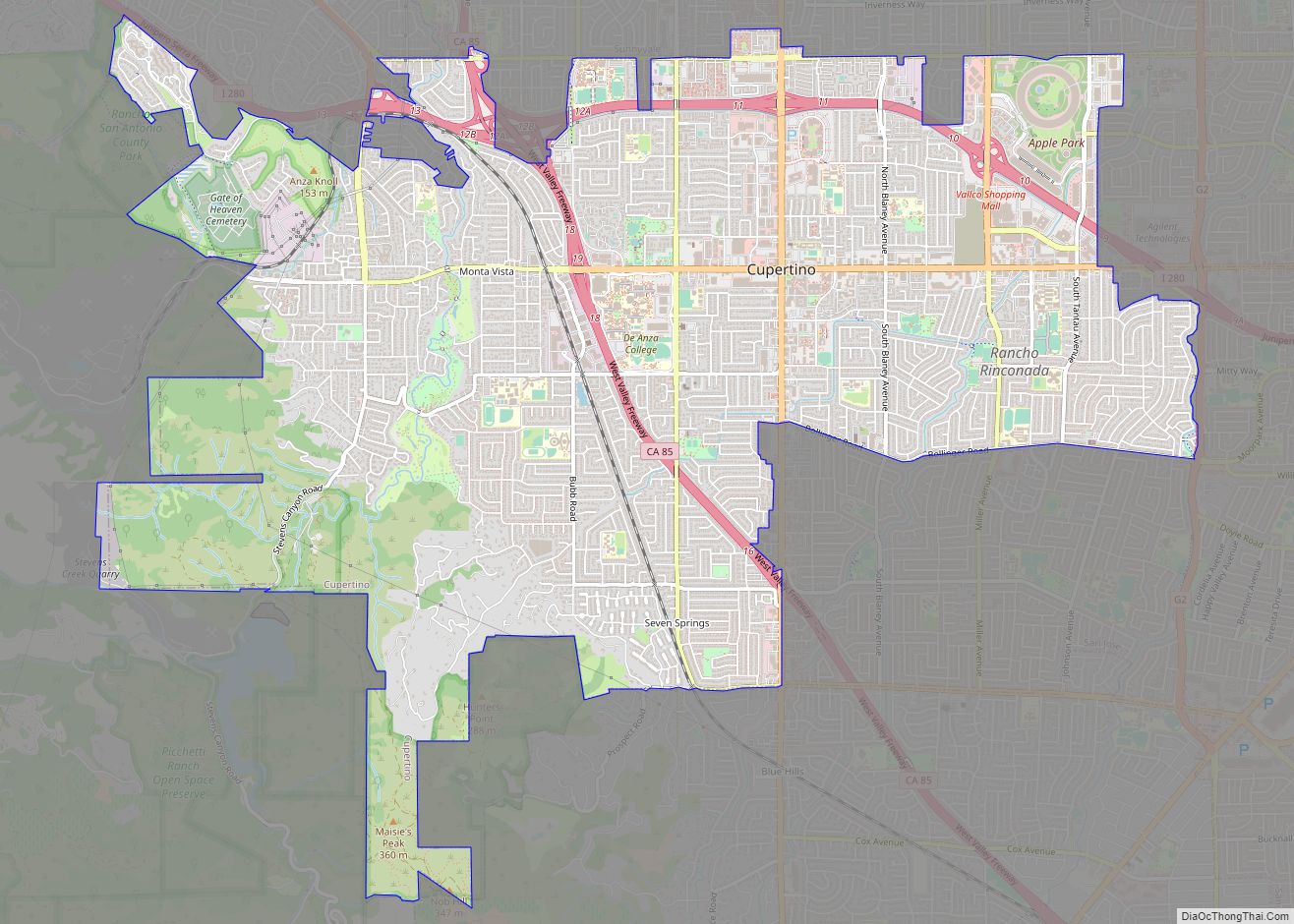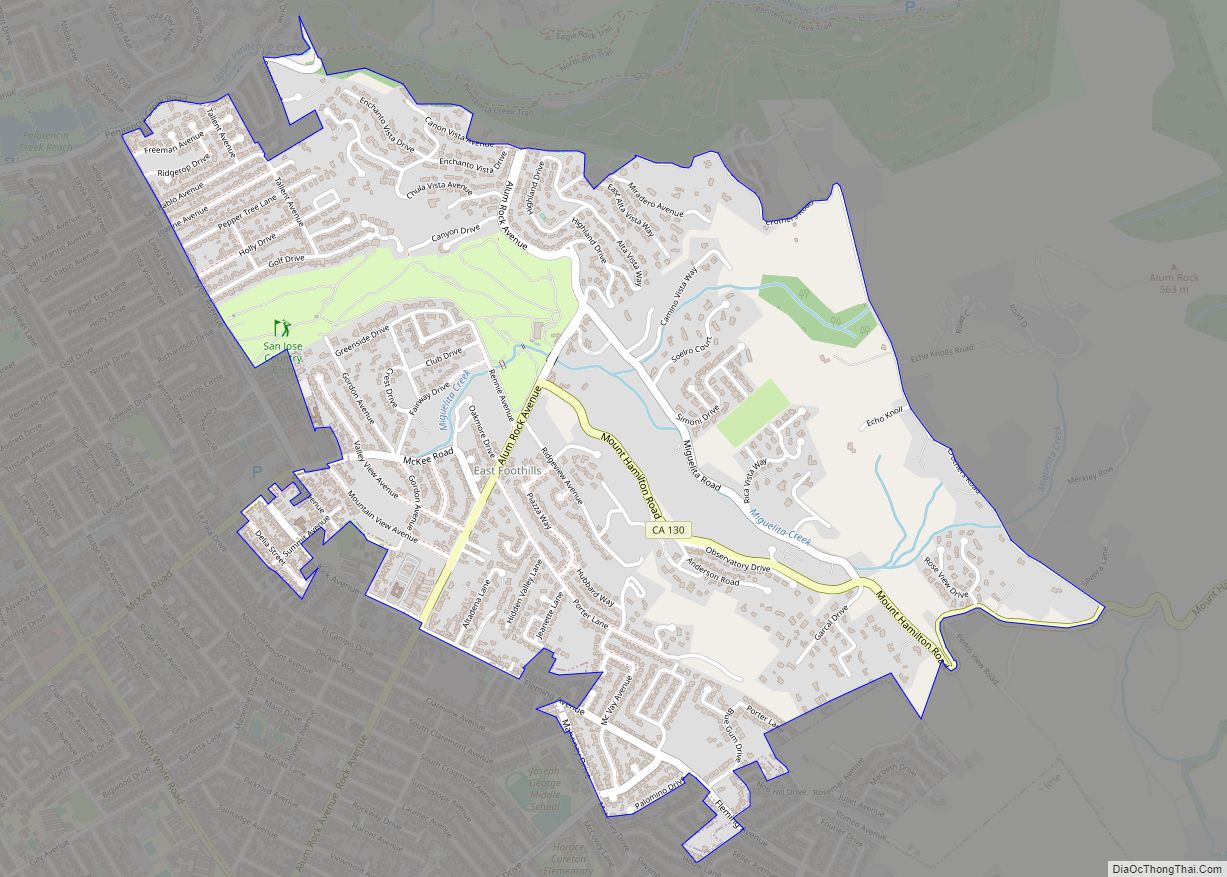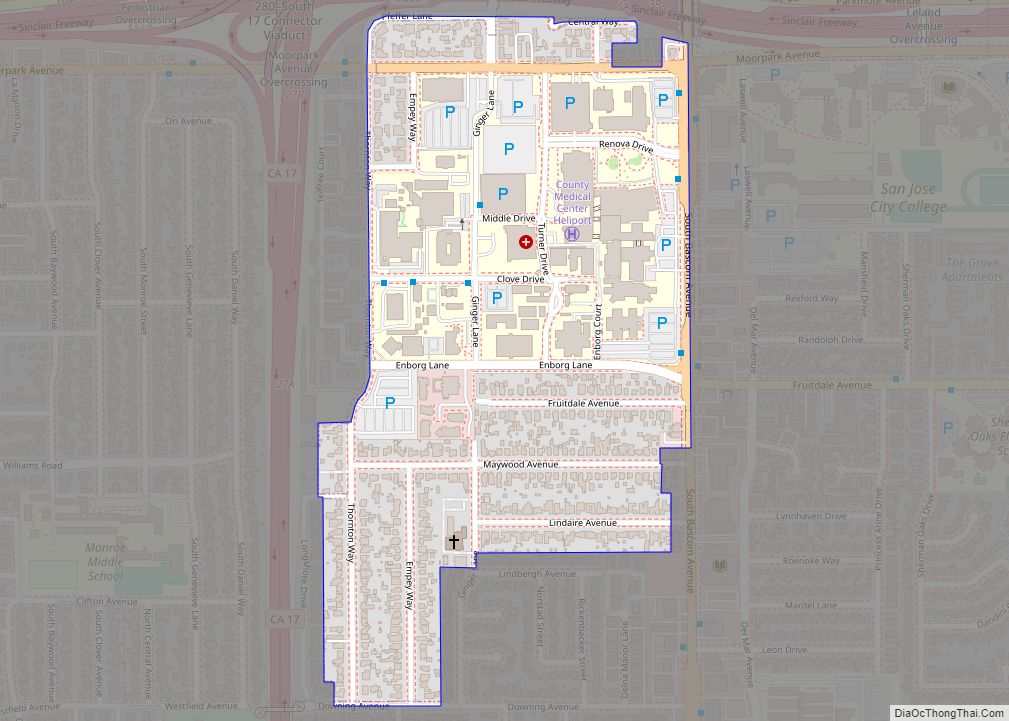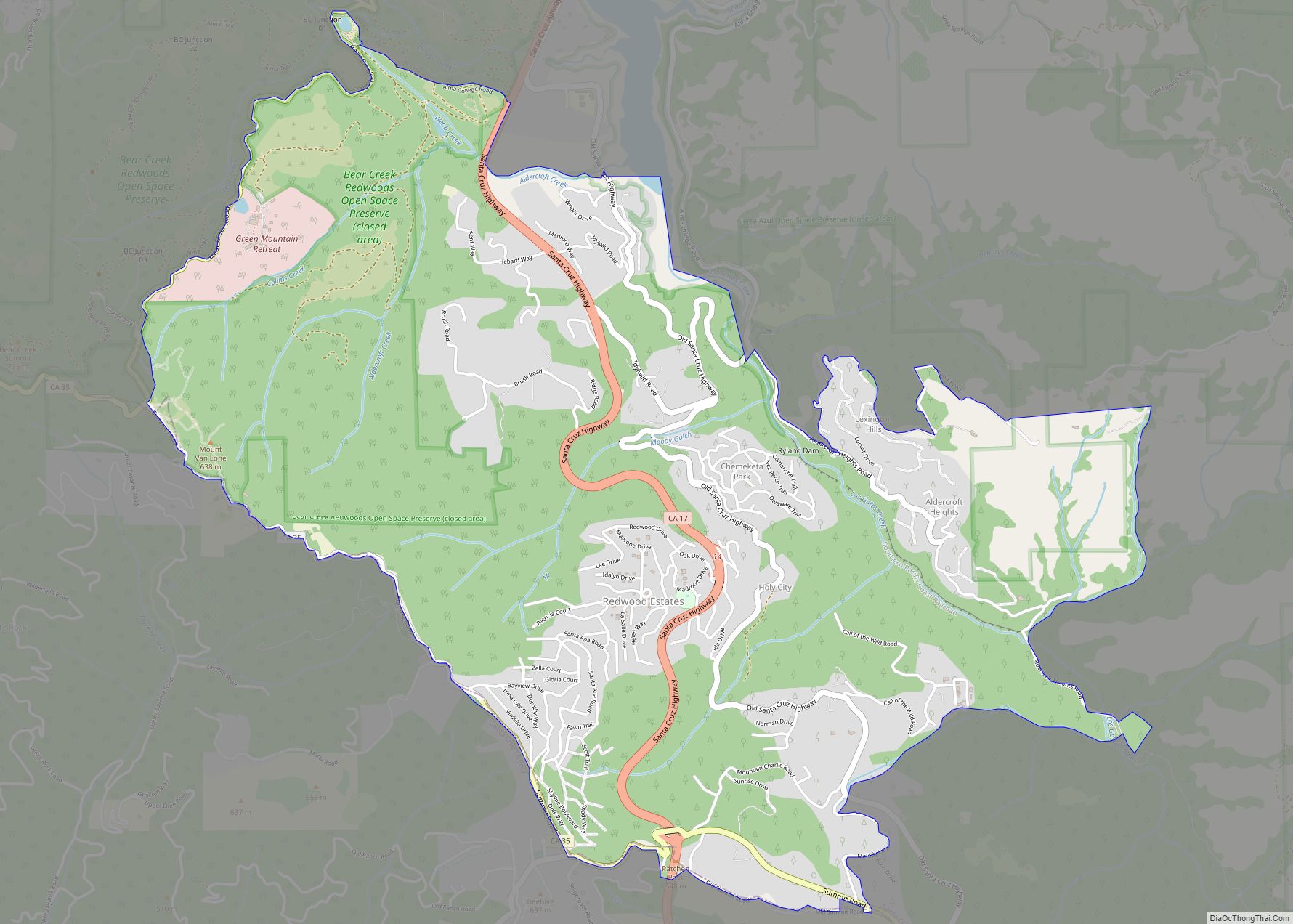Sunnyvale (/ˈsʌniveɪl, vəl/) is a city located in the Santa Clara Valley in northwest Santa Clara County in the U.S. state of California.
Sunnyvale lies along the historic El Camino Real and Highway 101 and is bordered by portions of San Jose to the north, Moffett Federal Airfield and NASA Ames Research Center to the northwest, Mountain View to the northwest, Los Altos to the southwest, Cupertino to the south, and Santa Clara to the east.
Sunnyvale’s population was 155,805 at the 2020 census, making it the second most populous city in the county (after San Jose) and the seventh most populous city in the San Francisco Bay Area.
As one of the major cities that make up California’s high-tech area known as Silicon Valley, Sunnyvale is the birthplace of the video game industry, former location of Atari headquarters, and the location of a fictional computer game company in the 1983 film WarGames. Many technology companies are headquartered in Sunnyvale and many more operate there, including several aerospace/defense companies.
Sunnyvale was also the home to Onizuka Air Force Station, often referred to as “the Blue Cube” due to the color and shape of its windowless main building. The facility, previously known as Sunnyvale Air Force Station, was named for the deceased Space Shuttle Challenger astronaut Ellison Onizuka. It served as an artificial satellite control facility of the U.S. military until August 2010 and has since been decommissioned and demolished.
Sunnyvale is one of the few U.S. cities to have a single unified Department of Public Safety, where all personnel are trained as firefighters, police officers, and EMTs, so that they can respond to an emergency in any of the three roles.
Library services for the city are provided by the Sunnyvale Public Library, located at the Sunnyvale Civic Center.
| Name: | Sunnyvale city |
|---|---|
| LSAD Code: | 25 |
| LSAD Description: | city (suffix) |
| State: | California |
| County: | Santa Clara County |
| Incorporated: | December 24, 1912 |
| Elevation: | 125 ft (38 m) |
| Total Area: | 22.78 sq mi (58.99 km²) |
| Land Area: | 22.06 sq mi (57.14 km²) |
| Water Area: | 0.72 sq mi (1.86 km²) 3.09% |
| Total Population: | 155,805 |
| Population Density: | 6,800/sq mi (2,600/km²) |
| ZIP code: | 94085–94090 |
| FIPS code: | 0677000 |
| Website: | sunnyvale.ca.gov |
Online Interactive Map
Click on ![]() to view map in "full screen" mode.
to view map in "full screen" mode.
Sunnyvale location map. Where is Sunnyvale city?
History
When the Spanish first arrived in the 1770s at the Santa Clara Valley, it was heavily populated by the Ohlone Native Americans. However early on with the arrival of the Spaniards, smallpox, measles and other new diseases greatly reduced the Ohlone population. In 1777, Mission Santa Clara was founded by Franciscan missionary Padre Junipero Serra and was originally located in San Jose (near what is now the San Jose International Airport runway).
1800s
In 1843, Rancho Pastoria de las Borregas was granted to Francisco Estrada and his wife Inez Castro. Portions of the land given in this grant later developed into the cities of Mountain View and Sunnyvale. Two years later, in 1844, another land grant was provided to Lupe Yñigo, one of the few Native Americans to hold land grants. His land grant was first called Rancho Posolmi, named in honor of a village of the Ohlone that once stood in the area. Rancho Posolmi was later known as Rancho Ynigo.
Martin Murphy Jr. came to California with his father as part of the Stephens-Townsend-Murphy Party in 1844. In 1850, Martin Murphy Jr. bought a piece of Rancho Pastoria de las Borregas for $12,500. Murphy established a wheat farm and ranch named Bay View. Murphy had the first wood-frame house in Santa Clara County; it was shipped from New England. The house was demolished in 1961 but was reconstructed in 2008 as the Sunnyvale Heritage Park Museum. When he died in 1884, his land was divided among his heirs.
In 1860, The San Francisco and San Jose Rail Road was allowed to lay tracks on Bay View and established Murphy Station. Lawrence Station was later established on the southern edge of Bay View.
In the 1870s, small fruit orchards replaced many large wheat farms, because wheat farming turned uneconomical due to county and property tax laws, imports and soil degradation. In 1871, Dr. James M. Dawson and his wife Eloise (née Jones) established the first fruit cannery in the county. Fruit agriculture for canning soon became a major industry in the county. The invention of the refrigerated rail car further increased the viability of an economy based upon fruit. The fruit orchards became so prevalent that in 1886, the San Jose Board of Trade called Santa Clara County the “Garden of the World”.
In the 1880s, Chinese workers made up roughly one third of the farm labor in Santa Clara County. This percentage reduced over time after the Chinese Exclusion Act was passed. In the following decade, the 1890s, many immigrants from Italy, the Azores, Portugal, and Japan arrived to work in the orchards.
In 1897, Walter Everett Crossman bought 200 acres (809,000 m) and began selling real estate. He advertised the area as “Beautiful Murphy” and later, in the 1900s, as “the City of Destiny”. Also in 1897, Encinal School opened as the first school in Murphy. Previously, children in the town had to travel to Mountain View for school. The area also became known as Encinal.
1900s
In 1901, the residents of Murphy were informed they could not use the names Encinal or Murphy for their post office. Sunnyvale was given its current name on March 24, 1901. It was named Sunnyvale as it is located in a sunny region adjacent to areas with significantly more fog.
Sunnyvale continued to grow and in 1904, dried fruit production began. Two years later, Libby, McNeill & Libby, a Chicago meat-packing company, decided to open its first fruit-packing factory in Sunnyvale. Today, a water tower painted to resemble the first Libby’s fruit cocktail can label identifies the former site of the factory.
Also in 1906, the Joshua Hendy Iron Works relocated from San Francisco to Sunnyvale after the company’s building was destroyed by fire after the 1906 earthquake. The ironworks was the first non-agricultural industry in the town. The company later switched from producing mining equipment to other products such as marine steam engines.
In 1912, the residents of Sunnyvale voted to incorporate, and Sunnyvale became an official city.
Fremont High School first opened in 1923.
In 1924, Edwina Benner was elected to her first term as mayor of Sunnyvale. She was the second female mayor in the history of the state of California.
In 1930, Congress decided to place the West Coast dirigible base in Sunnyvale after “buying” the 1,000-acre (4.0 km) parcel of farmland bordering the San Francisco Bay from the city for $1.
This naval airfield was later renamed Naval Air Station Moffett and then Moffett Federal Airfield and is commonly called Moffett Field.
In 1939, the National Advisory Committee for Aeronautics (NACA, the forerunner of NASA) began research at Ames Laboratory.
During World War II, the war economy began a change from the fruit industry to the high-tech industry in Santa Clara County. The Joshua Hendy Iron Works built marine steam engines, naval guns and rocket launchers to aid in the war effort. As the defense industry grew, a shortage of workers in the farm industry was created. Immigrants from Mexico came to Sunnyvale to fill this void of workers.
Following the war, the fruit orchards and sweetcorn farms were cleared to build homes, factories and offices.
In 1950 the volunteer fire department and the paid police department were combined into the department of public safety.
In 1956, the aircraft manufacturer Lockheed moved its headquarters to Sunnyvale.
Since then, numerous high-tech companies have established offices and headquarters in Sunnyvale, including Advanced Micro Devices and Yahoo.
The first prototype of Atari’s coin-operated Pong, the first successful video game, was installed in Sunnyvale in August 1972 in a bar named Andy Capp’s Tavern, now Rooster T. Feathers. Atari’s headquarters were located at 1196 Borregas Avenue in north Sunnyvale.
By 2002, the few remaining orchards had been replaced with homes and shops. However, there are still city-owned orchards, such as the Heritage Orchard next to the Sunnyvale Community Center.
In 1979, an indoor mall called Sunnyvale Town Center opened in what used to be a traditional downtown shopping district. After years of successful operation, the mall started to decline in the 1990s. After numerous changes in plans and ownership, the mall was demolished in 2007.
2000s
Sunnyvale celebrated its one-hundredth anniversary on August 25, 2012.
In November 2009, previously closed portions of the main streets in downtown Sunnyvale were reopened as part of the ongoing downtown redevelopment of the Sunnyvale Town Center mall, marking the first time in over three decades that those street blocks have been open to vehicle and pedestrian traffic. Part of the project involved building new apartment buildings, however during the Great Recession the property was repossessed by Wells Fargo in 2009; the developer countersued, leaving the project in legal limbo through 2015.
The two office buildings are now fully occupied by Uber. Mixed-use developments have been built at the former Town and Country location near the Plaza del Sol just north of Murphy Avenue. By mid 2015, new multistory apartment complexes had opened, including a number of ground-floor businesses, and the lawsuit against Wells Fargo was resolved in the bank’s favor. The development was sold to Sares Regis in late 2016. Redwood Square reopened as a park in 2017. Many apartments are occupied, and more are being completed in 2020. A Whole Foods Market and AMC Theatres multiplex opened in October 2020.
In the 2010s, Sunnyvale became home to operations from numerous major technology companies including Apple, LinkedIn (now headquartered in Sunnyvale), Google, Walmart Labs, and 23andMe. Google in particular has announced major development plans in the Moffett Park area, adjacent to Moffett Field.
Sunnyvale Road Map
Sunnyvale city Satellite Map
Geography
Sunnyvale is located at 37°22′7.56″N 122°2′13.4″W / 37.3687667°N 122.037056°W / 37.3687667; -122.037056.
According to the United States Census Bureau, the city has a total area of 22.7 sq mi (58.8 km), of which, 22.0 sq mi (56.9 km) of it is land and 0.69 sq mi (1.8 km) of it (3.09%) is water. Its elevation is 130 feet above sea level.
Climate
Like most of the San Francisco Bay Area, Sunnyvale has a Mediterranean climate (Köppen Csb), with cool, moist winters and warm, very dry summers. Average daytime summer temperatures are in the high 70s, and during the winter, average daytime high temperatures rarely stay below 50 °F (10 °C). Snowfall is rare, but on January 21, 1962, and February 5, 1976, measurable snowfall occurred in Sunnyvale and most of the San Francisco Bay Area. Sunnyvale was briefly hit by tornadoes in 1951 and 1998, but otherwise they are extremely rare.
See also
Map of California State and its subdivision:- Alameda
- Alpine
- Amador
- Butte
- Calaveras
- Colusa
- Contra Costa
- Del Norte
- El Dorado
- Fresno
- Glenn
- Humboldt
- Imperial
- Inyo
- Kern
- Kings
- Lake
- Lassen
- Los Angeles
- Madera
- Marin
- Mariposa
- Mendocino
- Merced
- Modoc
- Mono
- Monterey
- Napa
- Nevada
- Orange
- Placer
- Plumas
- Riverside
- Sacramento
- San Benito
- San Bernardino
- San Diego
- San Francisco
- San Joaquin
- San Luis Obispo
- San Mateo
- Santa Barbara
- Santa Clara
- Santa Cruz
- Shasta
- Sierra
- Siskiyou
- Solano
- Sonoma
- Stanislaus
- Sutter
- Tehama
- Trinity
- Tulare
- Tuolumne
- Ventura
- Yolo
- Yuba
- Alabama
- Alaska
- Arizona
- Arkansas
- California
- Colorado
- Connecticut
- Delaware
- District of Columbia
- Florida
- Georgia
- Hawaii
- Idaho
- Illinois
- Indiana
- Iowa
- Kansas
- Kentucky
- Louisiana
- Maine
- Maryland
- Massachusetts
- Michigan
- Minnesota
- Mississippi
- Missouri
- Montana
- Nebraska
- Nevada
- New Hampshire
- New Jersey
- New Mexico
- New York
- North Carolina
- North Dakota
- Ohio
- Oklahoma
- Oregon
- Pennsylvania
- Rhode Island
- South Carolina
- South Dakota
- Tennessee
- Texas
- Utah
- Vermont
- Virginia
- Washington
- West Virginia
- Wisconsin
- Wyoming
